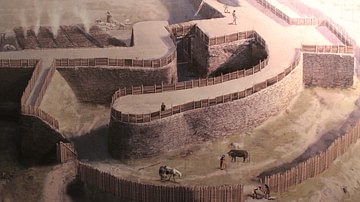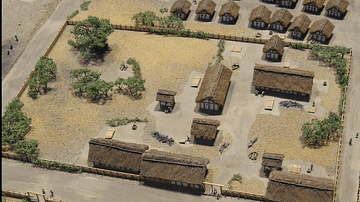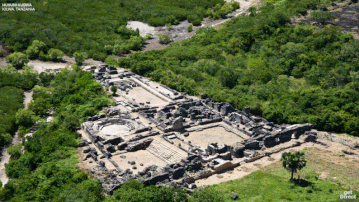Illustration
A reconstruction of the late Iron Age hillfort in Heuneburg, Germany. Heuneburg was first fortified in the 16th Century BCE, but was abandoned in the Late Bronze Age. Heuneburg was again fortified in the 6th Century BCE with a mud brick wall.
Around 500 BCE, the site's fortifications were structured like a Celtic oppidum, with a stone wall encircling a wooden wall. Watchtowers were built around the whitewashed mudbrick walls, and rectangular timber dwellings were built inside. The interior layout of the settlement was inspired by Classical Greek cities, a testament to Mediterranean architectural influences which had begun permeating Europe.
Cite This Work
APA Style
Valette, C. (2019, June 17). Reconstruction of the Heuneburg Hillfort. World History Encyclopedia. Retrieved from https://www.worldhistory.org/image/10933/reconstruction-of-the-heuneburg-hillfort/
Chicago Style
Valette, Claude. "Reconstruction of the Heuneburg Hillfort." World History Encyclopedia. Last modified June 17, 2019. https://www.worldhistory.org/image/10933/reconstruction-of-the-heuneburg-hillfort/.
MLA Style
Valette, Claude. "Reconstruction of the Heuneburg Hillfort." World History Encyclopedia. World History Encyclopedia, 17 Jun 2019. Web. 28 Mar 2025.







